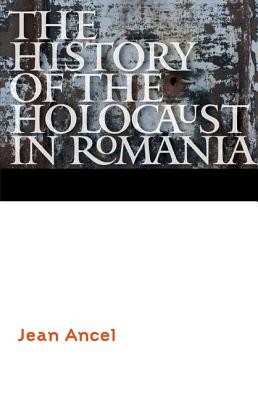
- We will send in 10–14 business days.
- Author: Jean Ancel
- Publisher: University of Nebraska Press
- ISBN-10: 0803220642
- ISBN-13: 9780803220645
- Format: 16.5 x 23.2 x 5.1 cm, hardcover
- Language: English
- SAVE -10% with code: EXTRA
Reviews
Description
Published by the University of Nebraska Press, Lincoln, and Yad Vashem, Jerusalem Based on an unparalleled and exhaustive collection of original Jewish accounts and sources not available until the fall of Nicolae Ceausescu in the late 1980s, Jean Ancel provides a detailed analysis of the path of antisemitism that led to the unspeakable horrors of the Holocaust in Romania. The Romanians, and other nations inside and outside the Balkans, related differently to "their Jews" and "other Jews," that is, those living in districts annexed to Romania after the First World War and in areas occupied and annexed to the Romanian military administration after the Soviet invasion in June 1941. The Jews of the Regat, the core Romanian principality, suffered pogroms, decrees, and degradation, but on the whole they survived the Holocaust. Contradicting long-held assumptions, Ancel shows that Romanians were largely responsible for murdering their Jewish community-one of the largest in Europe before the war-and although its survival rate was the highest in Europe, the survival rate in areas where Jews were liquidated was one of the lowest. Jean Ancel (1940-2008) was a Romanian-born Israeli independent historian and a research associate of Yad Vashem's International Institute for Holocaust Research. He is the author and editor of numerous books, including Wilhelm Filderman: Memoirs and Diaries, Volume 1, 1900-1940 (Yad Vashem and Tel Aviv University, 2004); The Economic Destruction of Romanian Jewry (Yad Vashem, 2007); and Prelude to Mass Murder: The Pogrom in Iaşi, June 29, 1941 (Yad Vashem, forthcoming).
EXTRA 10 % discount with code: EXTRA
The promotion ends in 10d.22:20:01
The discount code is valid when purchasing from 10 €. Discounts do not stack.
- Author: Jean Ancel
- Publisher: University of Nebraska Press
- ISBN-10: 0803220642
- ISBN-13: 9780803220645
- Format: 16.5 x 23.2 x 5.1 cm, hardcover
- Language: English English
Published by the University of Nebraska Press, Lincoln, and Yad Vashem, Jerusalem Based on an unparalleled and exhaustive collection of original Jewish accounts and sources not available until the fall of Nicolae Ceausescu in the late 1980s, Jean Ancel provides a detailed analysis of the path of antisemitism that led to the unspeakable horrors of the Holocaust in Romania. The Romanians, and other nations inside and outside the Balkans, related differently to "their Jews" and "other Jews," that is, those living in districts annexed to Romania after the First World War and in areas occupied and annexed to the Romanian military administration after the Soviet invasion in June 1941. The Jews of the Regat, the core Romanian principality, suffered pogroms, decrees, and degradation, but on the whole they survived the Holocaust. Contradicting long-held assumptions, Ancel shows that Romanians were largely responsible for murdering their Jewish community-one of the largest in Europe before the war-and although its survival rate was the highest in Europe, the survival rate in areas where Jews were liquidated was one of the lowest. Jean Ancel (1940-2008) was a Romanian-born Israeli independent historian and a research associate of Yad Vashem's International Institute for Holocaust Research. He is the author and editor of numerous books, including Wilhelm Filderman: Memoirs and Diaries, Volume 1, 1900-1940 (Yad Vashem and Tel Aviv University, 2004); The Economic Destruction of Romanian Jewry (Yad Vashem, 2007); and Prelude to Mass Murder: The Pogrom in Iaşi, June 29, 1941 (Yad Vashem, forthcoming).


Reviews